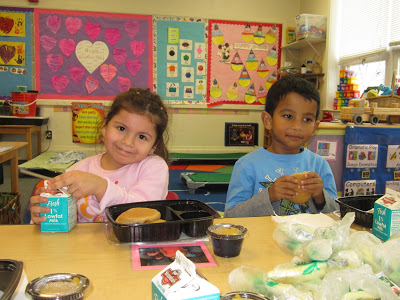‘Opportunity Neighborhoods’ formed in Annandale and Bailey’s Crossroads

The Opportunity Neighborhoods concept is coming to Annandale and Bailey’s Crossroads.
Fairfax County is contracting with a nonprofit in each of those areas to bring community members together to determine what services are available to low-income families, assess which needs are not being met, and collaborate on a plan to fill those gaps.
Opportunity Neighborhoods were established in Mount Vernon in 2011 and in Reston in 2016. Last year, the county agreed to expand the concept to Bailey’s Crossroads, Annandale, and Herndon.
The Fairfax County Department of Neighborhood and Community Services contracted with Second Story, which operates the Culmore Teen Center and Culmore Family Resource Center, to run organize the initiative in Bailey’s Crossroads.
Related story: Volunteers distribute hundreds of meals a week to Annandale’s needy families
FACETS, whose projects include the community center at the Wedgewood Apartments, will be in charge of Annandale Opportunity Neighborhoods (Annandale ON).
The goal is to improve outcomes for low-income youth by making sure supports are in place – from quality preschool to teen job-training programs.
The initiative takes a two-generational approach, recognizing that children have difficulty thriving if their parents are struggling or worried about losing their job or being evicted, says Terry Angelotti of FACETS, the strategy director of Annandale ON.
“I’ve been getting to know Annandale and the resources available here,” Angelotti says. She’s not only looking at food and emergency assistance, but also resources available at schools and parks. Angelotti has been meeting with representatives from the county government, school system, nonprofits, and the faith community.
From those conversations with community leaders, she identified two neighborhoods to focus on. One area – centered around the apartments along Patriot Drive and Americana Drive between the beltway and Little River Turnpike – has a 49 percent child poverty rate, the highest of any census tract in Annandale.
The other neighborhood, between Little River Turnpike, Hummer Road, and Annandale Road, has a lower child poverty rate (35 percent) but has the highest inequality index in the area.
Related story: Local group provides rent relief to Annandale and Bailey’s Crossroads residents
Annandale is already doing a really got job with distributing donated food to lower-income families, Angelotti says. There are also lots of other supportive programs, such as the Child Development Center and other initiatives run by the Annandale Christian Community for Action.
She plans to hire a bilingual community organization within the next few months to work with the Spanish-speaking community to get more information about where the gaps are and recruit volunteer community ambassadors.
 |
| The Child Development Center in Annandale. |
A planning council – with representatives from various stakeholder groups – will consider priorities using a “collective impact approach.”
“Collective impact is the idea that more and better results can be achieved when individuals and organizations pool resources and work together,” Angelotti says.
For example, if the community determines there’s a need for more preschool spaces or a place for teens to hang out on weekends, the participating organizations could work together to provide the space or funds.
The people she has reached out to so far “are really excited,” she says. “They can see the potential.”
The stakeholders might see a need for more early childhood education, job training for teens not planning for college, summer jobs for teens, or English language classes for parents.
“We don’t know where this is going,” Angelotti says. It’s going to be up to the community to decide what is needed.
Half a dozen Spanish-speaking Bailey’s Crossroads residents have already been recruited as community ambassadors and more are needed, says Nandred Navarro, director of community-based services at Second Story. The Bailey’s Crossroads Opportunity Neighborhoods initiative is being developed along similar lines.
The community ambassadors will help with outreach and will serve as “extra ears and eyes in the neighborhood,” she says. They will work with stakeholders to elevate community voices and leverage resources to make sure residents’ needs are served.
According to Navarro, one of the biggest needs in the Culmore area is food access. The lines for food distribution events are getting longer, as so many people are hurting economically during the pandemic.
Access to high-quality healthcare and equity around virtual education are also big issues, she says. When families live in overcrowded apartments with no privacy, it’s hard to concentrate on learning. And parents who lack computer literacy skills aren’t able to help their kids.
Opportunity Neighborhoods will give voice to community members, Navarro says, and will serve as an organized framework to foster collaboration among all stakeholders.

